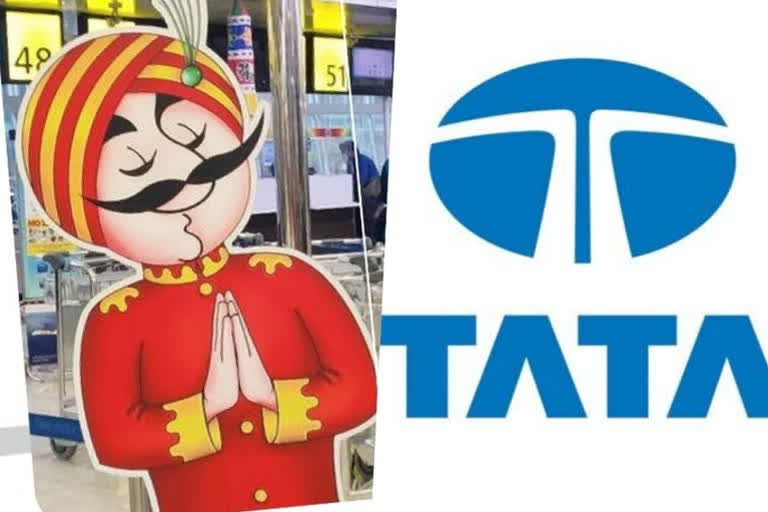Kolkata: The Tata Sons Limited emerging as the winning bidder for the debt-ridden public sector Air India, has brought back the iconic Tata Centre building along the Chowringhee Road, now Jawaharlal Nehru Road of Kolkata, back to the minds of West Bengal. The building was considered as one of the most important structures of corporate India, housing the marketing headquarters of Tata Steel.
The building also houses the offices of Tata Group associate companies like Metal Junction and Tata Metaliks Limited among others. The towering 18-storey building, which made its mark in the backdrop of the lush green Brigade Parade Grounds of Kolkata since 1963, has been a permanent fixture of the city's skyline, eventually making it as iconic as the Howrah Bridge or the nearby Victoria Memorial. It was also the city's first high-rise.
Then came the Taj Bengal hotel in Alipore, opposite the Zoological Park of the city and a Tata group property, yet again defining the city as well as the hospitality sector. For years together since its opening in 1989, the Taj Bengal hotel on the Belvedere Road has only added feathers in the cap of the City of Joy.
Before 2006, the annual trip of then Tata Group chairman and now chairman emeritus of Tata Sons, Ratan Tata, was something to look forward to among the city's business echelon. The event would be Ratan Tata attending the annual general meetings of the Tata Tea Limited (now Tata Global Beverages Limited). It was during one such trip in 2005 that Ratan Tata for the first time shared his dreams of bringing a handsome investment to Bengal. The following year, the seventh Left Front government came to power with a stunning majority and it also saw then chief minister Buddhadeb Bhattacharjee and Ratan Tata jointly making the announcement for the Tata Motors' small car factory in Singur.
It was practically a match of dreams – Ratan Tata's dream to roll out the Nano car and Bhattacharjee's dream of projecting the state as an investment and industrial destination. The Tatas were back in Bengal and in style.
But, the stakes were getting high in the political sphere of Bengal. As Buddhadeb Bhattacharjee desperately tried to shed off his dyed-in-the-wool Marxist image and give a fillip to the 'brand Buddha' avatar, then opposition leader Mamata Banerjee had other plans. On one hand, the foundation stone was laid and the sheds got constructed for the Tata Nano factory in Singur, and on the other Mamata's demonstration against land acquisition gained steam.
The momentum of the demonstration was faster than the pace at which the construction work for the Nano factory was going on. In two years' time the Tatas gave up. In October 2008, Ratan Tata finally announced his decision to pull out of Singur and shift the factory to Sanand in Gujarat. The skeleton of the abandoned Singur factory stared blankly at Bengal's path for industrial boost.
The Singur agitation of Mamata Banerjee, coupled with some other factors, paid her high dividends. In 2011, the Trinamool Congress under Mamata's leadership outsmarted the Left Front's 34-year rule and the first decision of the new cabinet and Mamata as chief minister was to return land acquired for the Singur Nano car factory among its owners. After a protracted legal battle with the Tatas, she was finally successful in doing so.
The Mamata Banerjee of circa 2021 is different from 2011. Today the Trinamool says, the Singur agitation was never aimed at the Tatas. “The land movement in Singur started to protect the livelihood of marginal farmers whose land was forcibly acquired by the then Left Front government. Our movement was not against the Tatas," says senior Trinamool Congress legislator Nirmal Ghosh.
But, economists feel that the damage done to investor confidence with the withdrawal of the Tatas from West Bengal has been lethal and is yet to be controlled or undone. There is still no big ticket investment in the state after that last announcement of Ratan Tata of the Nano car factory.
The Tatas emerging as the possible highest bidders for Air India is rekindling some hopes in the state's hustings, but will they forget the bitter Singur pill?
Though the iconic Tata Centre still dominates the Chowringhee Road, but is now dwarfed by other high-rises like the Everest House, the Chatterjee International Center and the latest and the tallest entrant on the block, the 250 metres-plus high, the 42. Will the Tatas remain as an address in Kolkata or decide to make an investment comeback, is to be seen.
Also read: Tata Sons winner of Air India bid? Govt denies media reports



